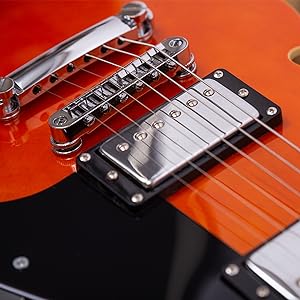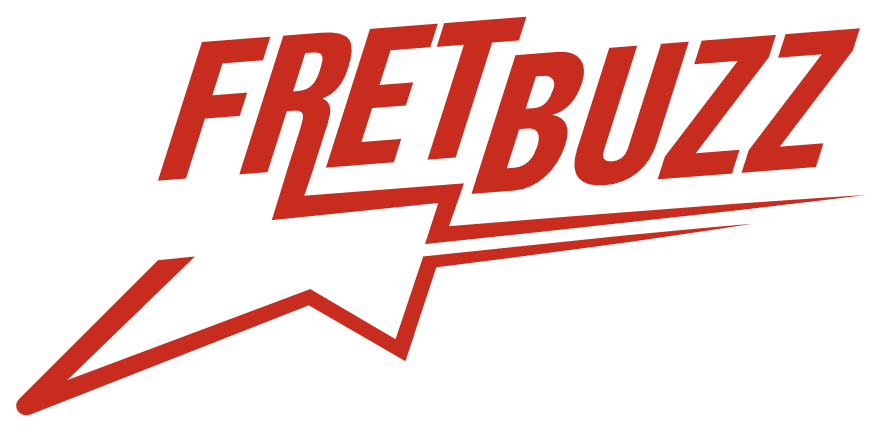
FULL DISCLOSURE: We’ve never played, let along held a genuine Gibson ES-335 semi-hollow body, most of which seem to be priced at $2,000 and up (though Epiphone released a nice-looking model that’s around $600). But if you’re like us, and you’ve always loved the look of the vintage instrument and are interested in checking out an ES-335 copy — if only to get a feel for the thing — then you should seriously consider investing a bit of cash in the Redid RD-100 Semi-Hollow Body 335DB.
If nothing else, it’s a sweet collection piece. The dark brown finish is slick and glossy, the mother of pearl fret inlays are classy, the maple neck is sturdy, and the basswood body is solid and relatively lightweight. Right out of the box, it’s a pretty guitar. Often, mass-produced models priced under $200 have uneven finishes or other workmanship flaws. That wasn’t the case with the Redid we received. There was a minor fret buzz that didn’t interfere with the amplified sound and was barely noticeable when played unplugged.
Even before being amplified, the RD-100 sounds surprisingly rich and resonant. The two f-holes aren’t blocked by any electronics that might interfere with the sound, so the guitar tone is full and reverberates nicely. The rounded C-shaped neck is smooth and easy to play on, the frets are solid and well-rounded, and the ’60s Kalamazoo-style headstock rounds off the instrument’s classic look.
When plugged in, the RD-100 delivers a warm, organic sound that’s perfect for a variety of genres, including jazz, rockabilly, ’50s pop, and classic rock. The two stock humbuckers provide a solid and versatile foundation for the guitar, enabling it to react well to various settings, including ambient washes, high-gain amp tones, and pedal embellishments. A tube screamer adds a nice, bluesy groove, while a ProCo Rat gives the instrument a gritty bite not usually associated with hollow body guitars.
We also tested the RD-100 with a chorus, phaser, a variety of reverbs and delays, and even the JHS Hard Drive, and discovered the pickups reacted well to whatever we threw at it — even rapid Metallica thrash riffs. And surprisingly, there was no feedback buzz at high gain settings. That said, we had the most fun playing less aggressive fare, such as Beatles rhythms, Oasis riffs, cowboy chords, and 12-bar blues patterns.
Minor quibbles: The tuners required attention after heavy strumming, but no more than we’d expect from most any guitars with non-locking tuners. And the pickups were slightly tilted when we first plugged it in. While they sounded good straight away, they looked nicer after a minor adjustment. Honestly, from a budget guitar, we expected to have to make many more tweaks — and had that been the case we would still have considered the Redid RD-100 a bargain at under $200 (we’ve seen it as low as $159).
Even after completing our review of the RD-100, we returned to it throughout the week to noodle around. It looks cool, feels good to hold, and is fun to play. The four tone and volume knobs, and three-way pickup selector switch are sturdy, and the guitar is light enough to rock out for hours without suffering back strain. We wouldn’t take the RD-100 on tour without making some modifications, but at the same time, we wouldn’t call it strictly a beginner’s guitar. The attractive design, solid construction, and impressive sound of the RD-100 earn it an unconditional green light. In the final analysis, anyone who wants to test out a budget ES-335 copy before considering the real deal, and those interested in an affordable, cool-looking guitar that sounds nearly as good as it looks should have no complaints with the RD-100.




Thank you for your review. Not a guitar guy, would like to own a S-H guitar because of its sound and great looks. This will be my everything guitar so if it falls on its face, I’m be terribly disappointed.
Because of its affordability I would make some immediate upgrades: locking tuners, roller bridge, Duisenberg tremolo,
I did buy a black one. As nice if not more cool than my epiphone ’56 gold top ($500 in 2003). I agree with your review but without fret buzz. Thanks